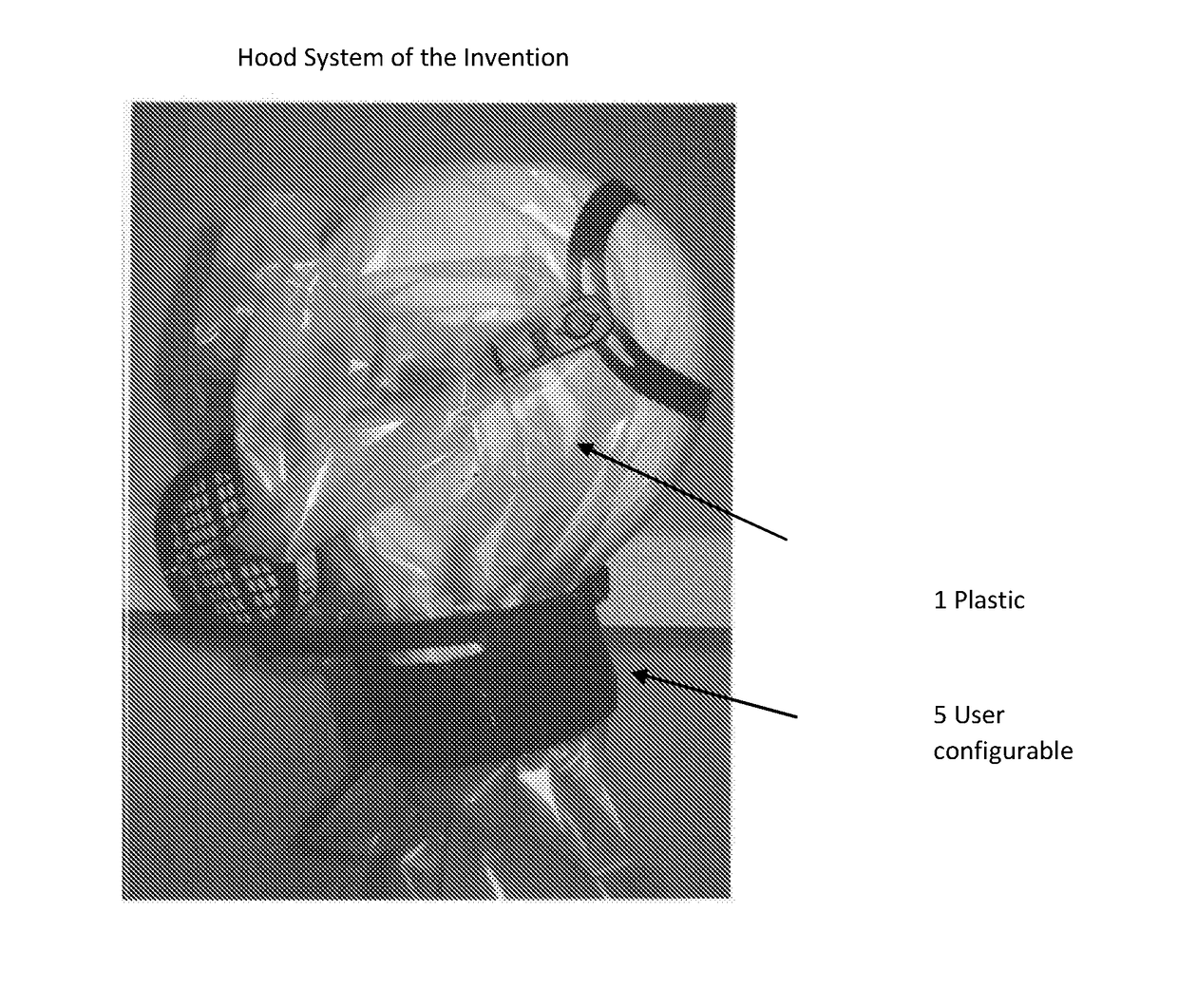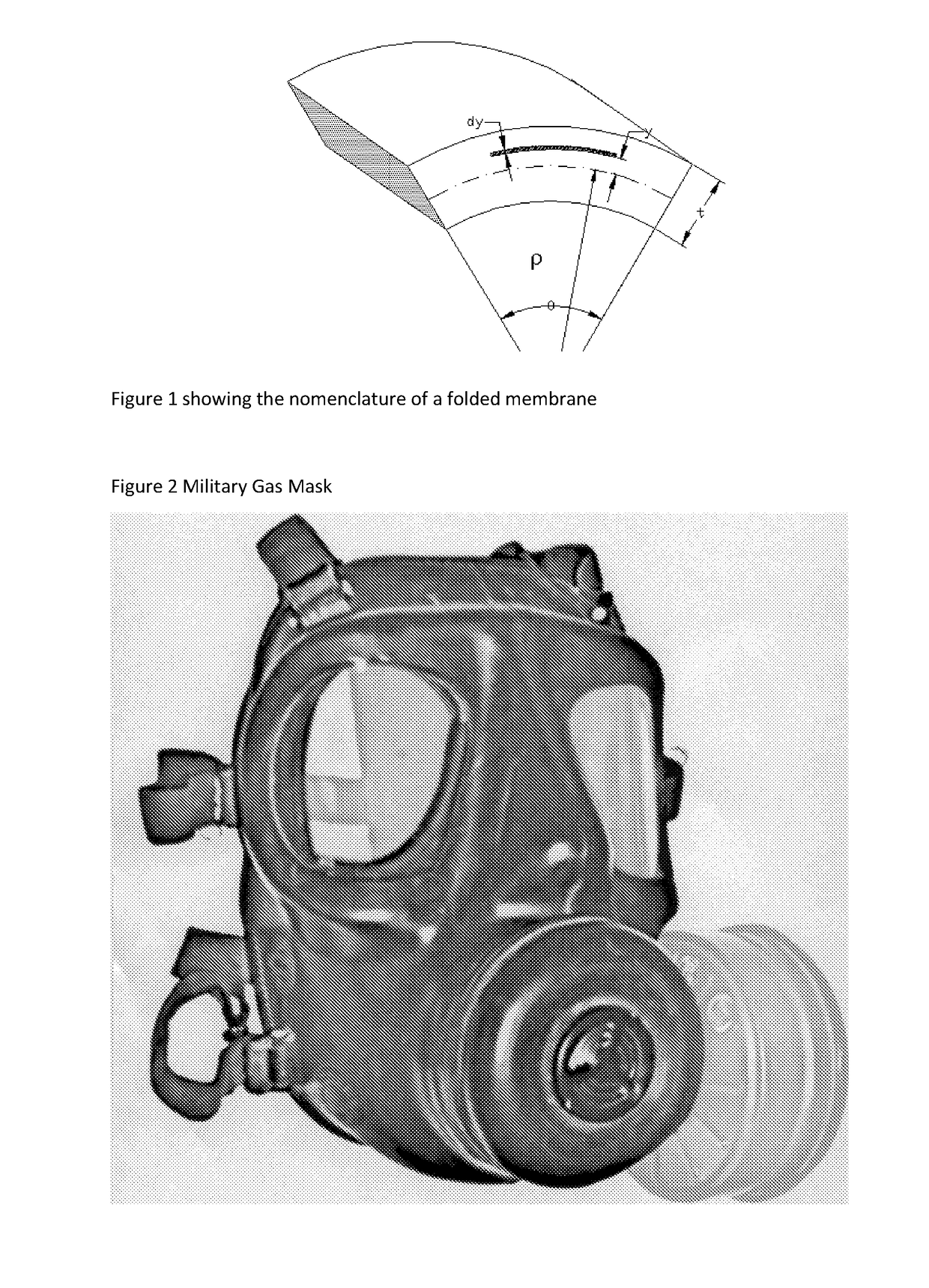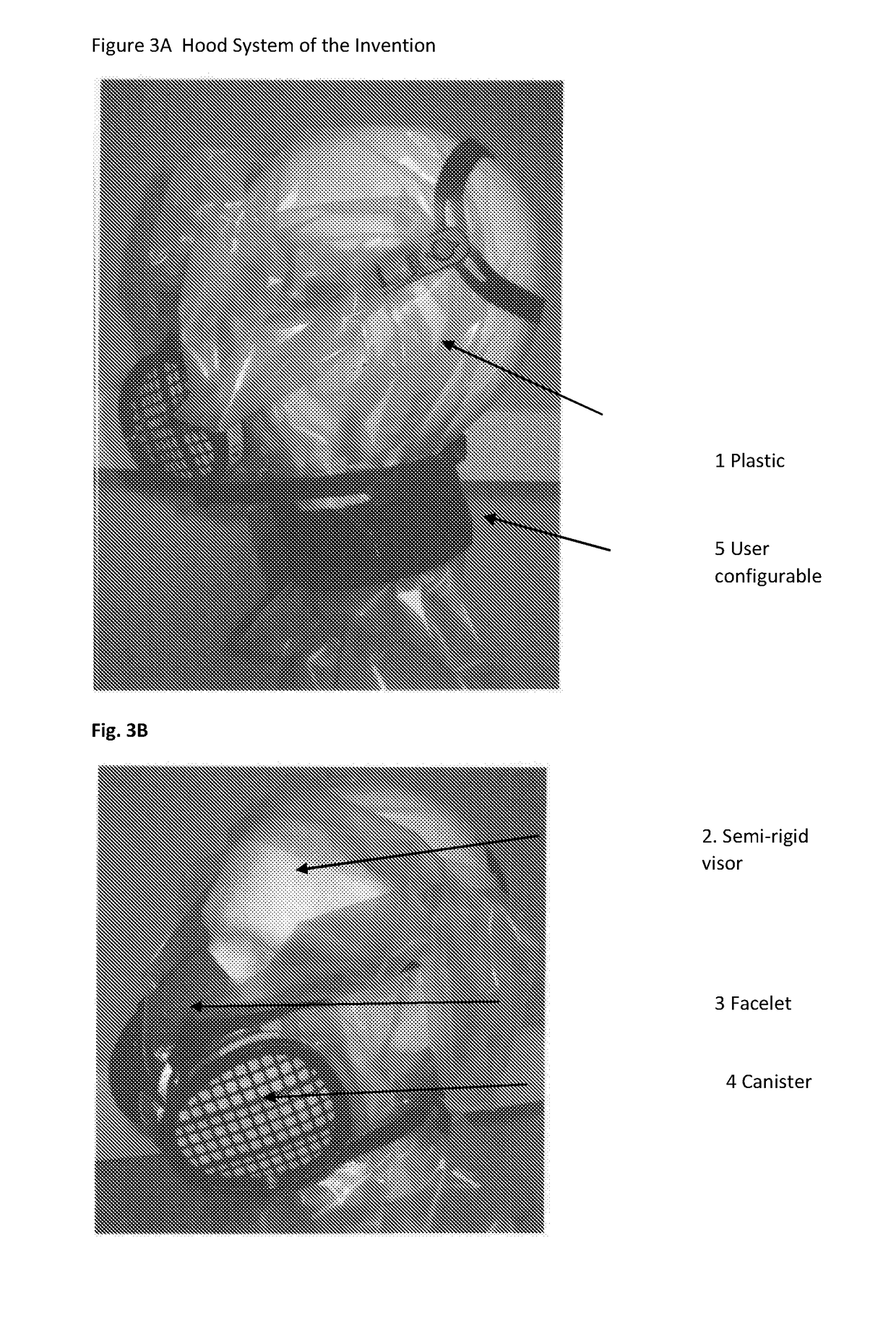Personal protection device
a protection device and personal protection technology, applied in life-saving devices, fire rescue, respiratory apparatus, etc., can solve the problems of large canisters with correspondingly high pressure drops, inability to use by the general population, and inability to protect the head, etc., to achieve convenient use, enhance vision, and easy application
- Summary
- Abstract
- Description
- Claims
- Application Information
AI Technical Summary
Benefits of technology
Problems solved by technology
Method used
Image
Examples
example 1
Preparation of Monolithic Porous Phenolic Resins and Corresponding Activated Monolithic Carbons
[0124]The phenolic resin precursor, a Novolak resin code J1011 supplied by Momentive, was co-milled with 5% weight hexamethylene tetramine to a mean particle size of 40 μm with D97 passing 70 μm. The co-milled resin was then placed in trays with a depth of 5 cm and subjected to a cure ramp of 100° C. / hour to 100° C., hold for 1 hour, ramp to 150° C. at 100° C. / hour, hold for 1 hour and then cool. The resulting biscuits of cured resin were then hammer milled to provide particles with a majority of particle size of <1 mm. The particles were then jet milled in a 300AFG mill to give a product resin having a bimodal particle size distribution with a primary peak at 40 μm (FIG. 6A). The resulting powdered resin was then classified using a 100AFG Jet Mill at 8000 rpm to remove the smaller peak (FIG. 6B). The average fines content was between 10 and 20%. 8 wt % of the fines was then added back to ...
example 2
Cyclohexane Adsorption Performance of Activated Carbon Monoliths
[0132]The cyclohexane adsorption performance of the activated carbon monoliths described in example 1 was assessed using the breakthrough equipment shown in FIG. 8. The monolith segments were dried in a vacuum overnight at 120° C. before being shrink wrapped onto 22 mm copper tubes which were then mounted in the adsorption vessel shown in FIG. 9.
[0133]The test comprised flowing a 1.2 L / minute of dry air containing 1000 ppm volume of cyclohexane through the monolith and detecting the cyclohexane content of the effluent gas stream. The tests examined the impact of monolith length and degree of activation on performance. FIG. 13A shows the breakthrough curves for the 10 to 25 mm monoliths activated to between 18 and 21% burn off, FIG. 13B shows the breakthrough curves for monoliths activated to between 22 and 25% BO and FIG. 11C for monoliths activated to between 26.9 and 28.3% BO.
[0134]The shape of the curves in FIG. 13A ...
example 3
Metal Impregnated Monoliths
[0137]For effective protection against agents other than those that can be adequately physical adsorbed impregnation with a mixture of metal compounds and TEDA is required. Methods of impregnation are well known to those skilled in the art and at present the formulation used has not been optimised. Based on the performance of the monoliths for cyclohexane adsorption, and the observed benefit from using higher activation extents, these results are limited to the higher burn off monoliths in the range from 30 to 36% weight loss. This production method is described below:
[0138]Impregnation is carried out by placing monoliths into a vacuum vessel to which an ammoniacal solution containing 6% zinc, 6% copper, 2.5% molybdate and 0.05% silver sufficient to completely submerge all the pieces is added. The vessel is then evacuated and repressurised several times until no bubbles are seen to evolve from the monolith channels. The monoliths are then removed from the ...
PUM
 Login to View More
Login to View More Abstract
Description
Claims
Application Information
 Login to View More
Login to View More - R&D
- Intellectual Property
- Life Sciences
- Materials
- Tech Scout
- Unparalleled Data Quality
- Higher Quality Content
- 60% Fewer Hallucinations
Browse by: Latest US Patents, China's latest patents, Technical Efficacy Thesaurus, Application Domain, Technology Topic, Popular Technical Reports.
© 2025 PatSnap. All rights reserved.Legal|Privacy policy|Modern Slavery Act Transparency Statement|Sitemap|About US| Contact US: help@patsnap.com



